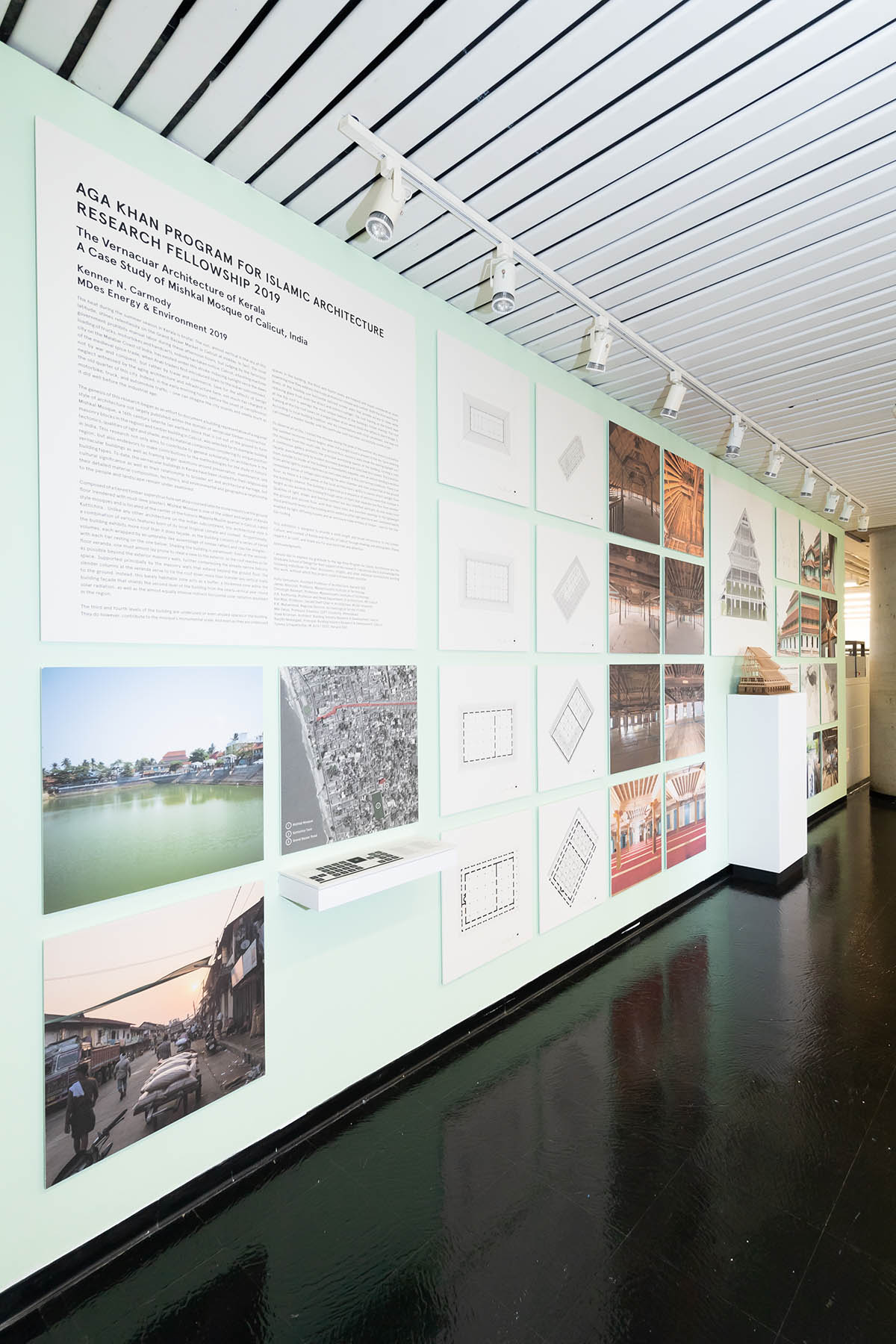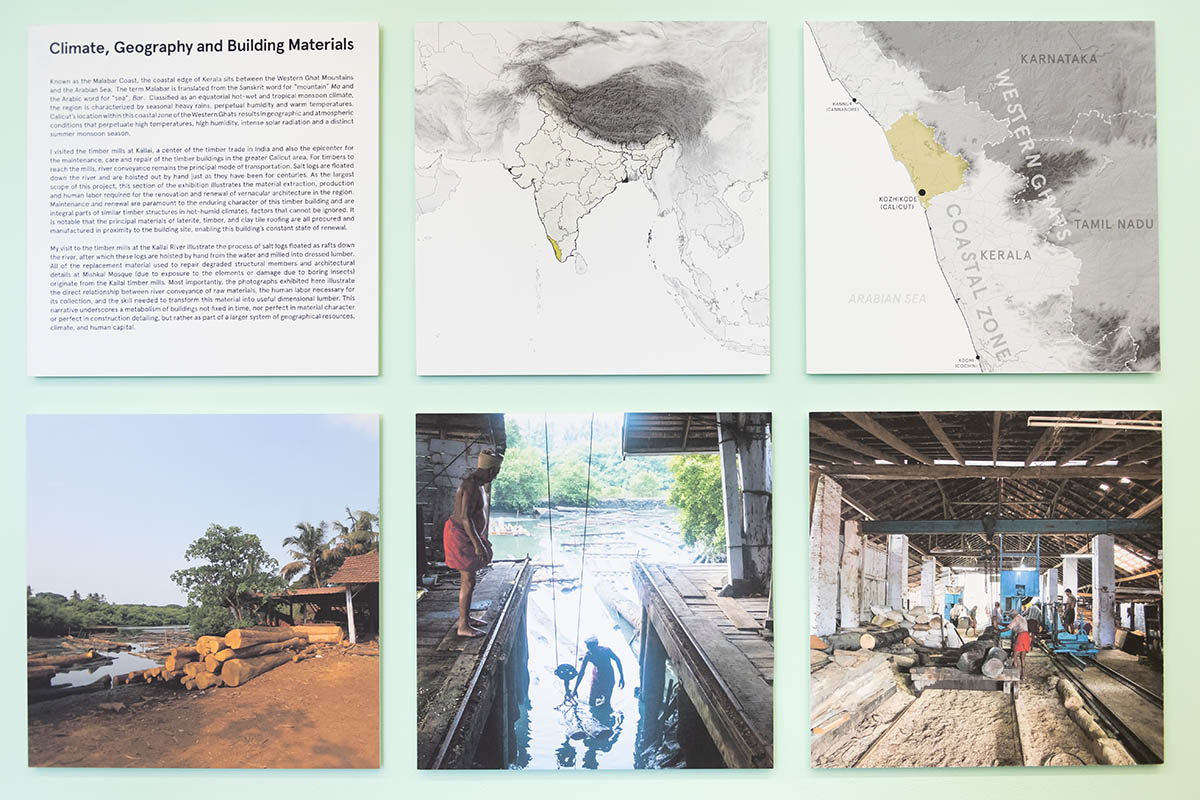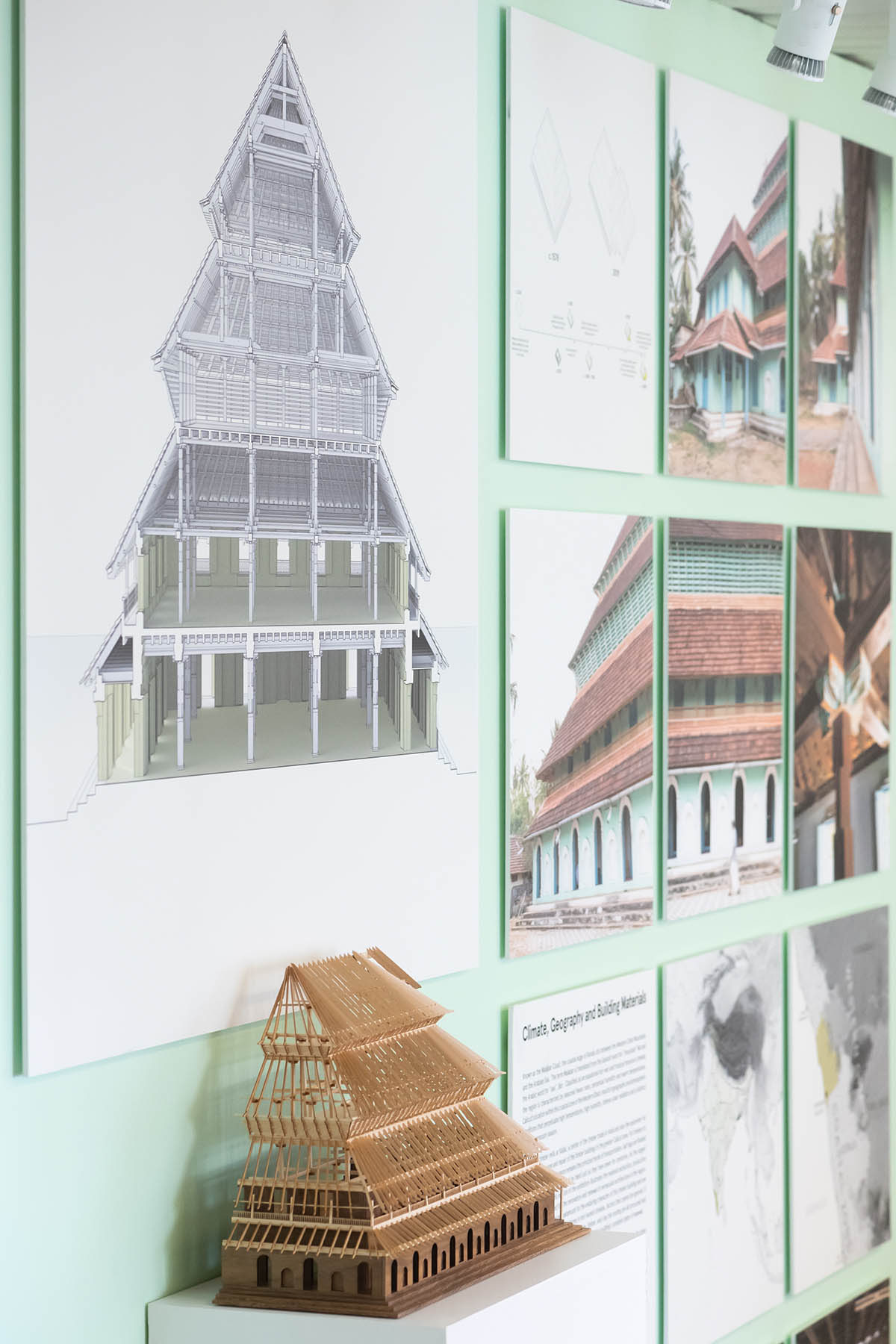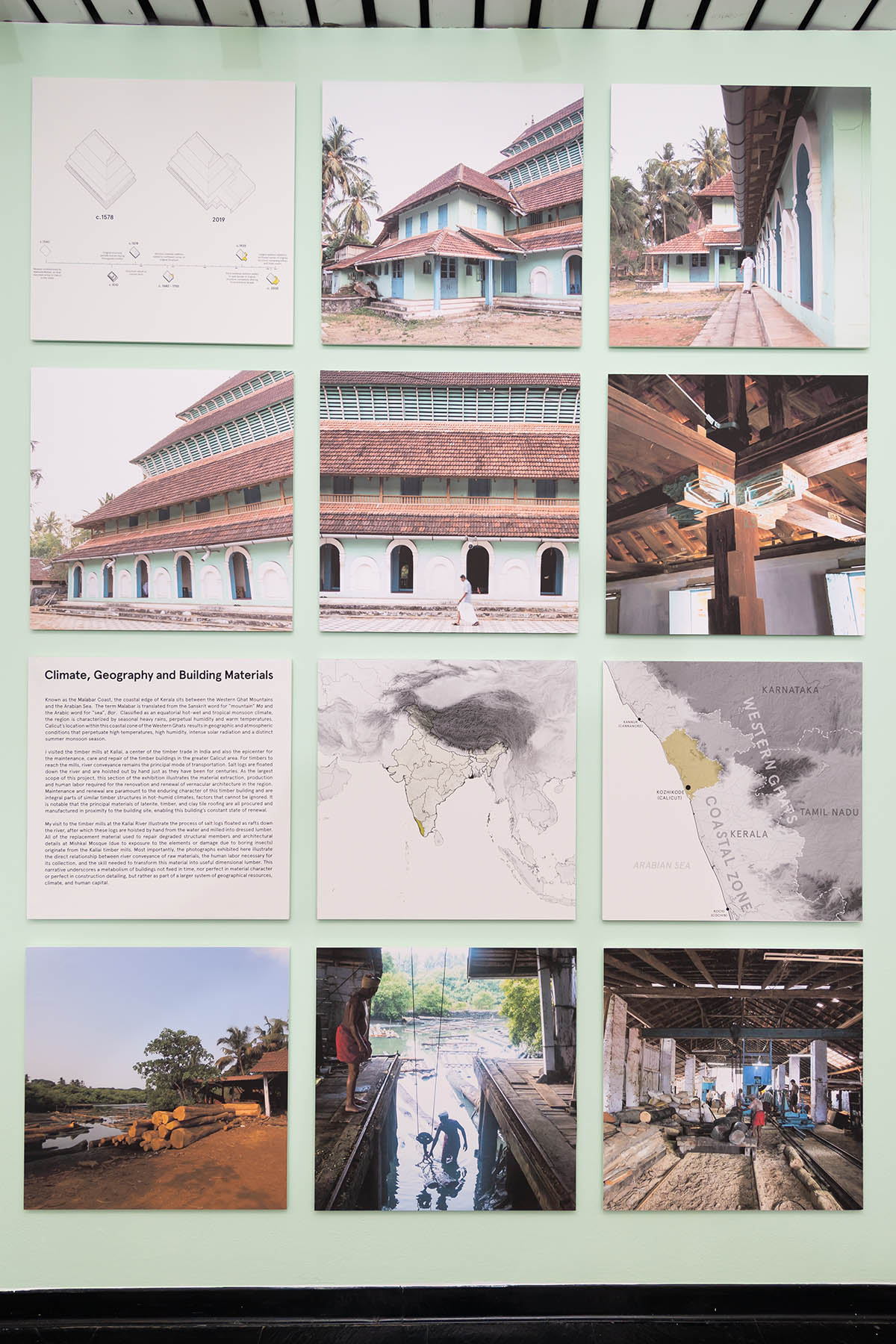The Vernacular Architecture of Kerala: A Case Study of Mishkal Mosque of Calicut, India
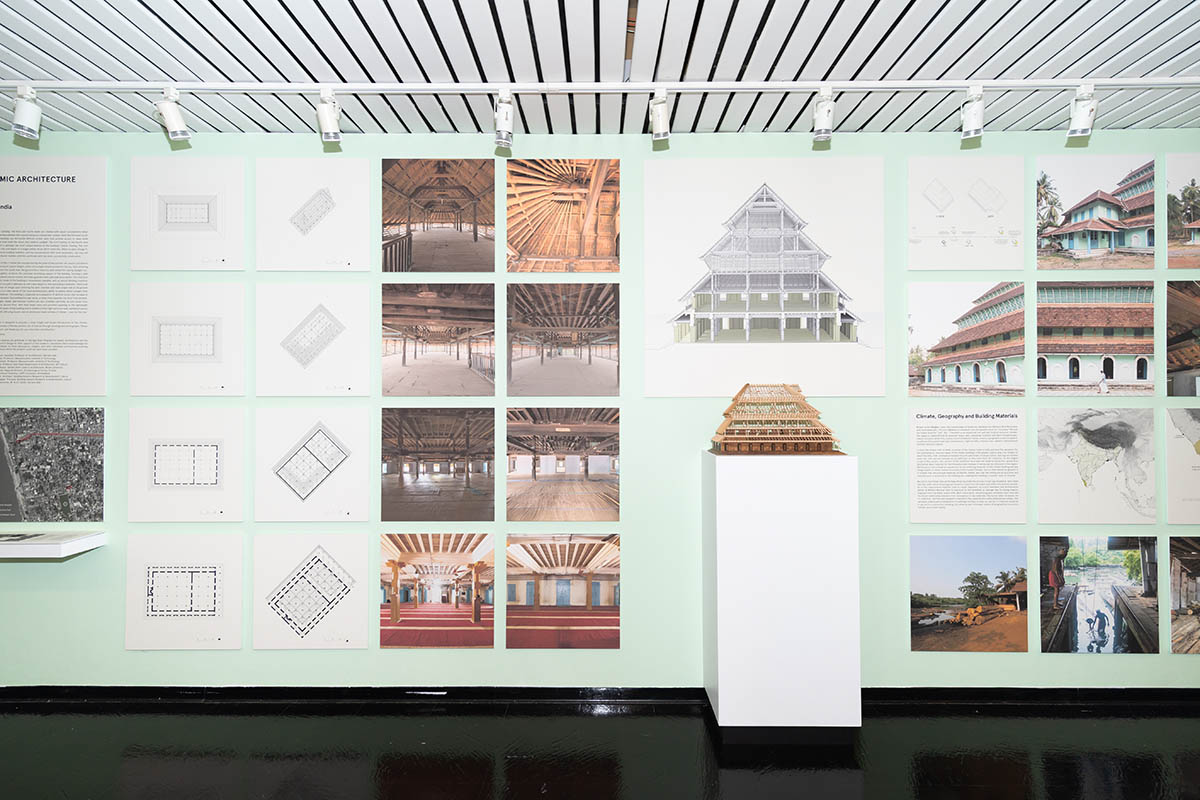
By Kenner N. Carmody (Master in Design Studies/Energy & Environment, Class of 2019), through the Aga Khan Program for Islamic Architecture Research Fellowship 2019
This exhibition is designed to provide a small insight and broad introduction to the climate, culture, and context of Kerala and the city of Calicut through drawings and photographs.
The heat during the summer season in Kerala is brutal. The sun, almost vertical in the sky at this latitude, shines relentlessly on the Grand Bazaar Market in Calicut at midday. In fact, the local government prohibits manual labor during these afternoon hours, but judging by the ferocious loading of trucks, motorbikes and handcarts, nobody has taken notice. Calicut, a bustling maritime city on the Malabar Coast of India, has existed under this stroke-inducing sunlight since the dawn of the medieval spice trade, when Arab traders first introduced Islam to the Indian subcontinent, not by war and conquest, but rather by trade and commerce. Save for the effects of benign neglect witnessed by the aging architecture and infrastructure here, not much has changed in the old quarter of this city. Indeed, in the early morning hours, before the onset of cacophonous motorbike, truck, and automobile traffic – one can imagine the city sounds and smells much as it did well before the industrial age.
The genesis of this research began as an effort to document a building representative of a regional style of architecture not largely published within the domain of vernacular timber construction. Mishkal Mosque, a 16th-century laterite (an earthen block that is cut out of the ground to form masonry blocks in the region) and timber building in Calicut, was selected for its exemplar building tectonics, qualities of light and shade, and its material composition considering its unique position in India. This research not only aims to contribute to general scholarship on architecture in the region, but also endeavors to make contributions to the methodologies for the study of historic vernacular buildings as well as framing larger questions around preservation, maintenance, and building types. To date, the vernacular buildings in Kerala have been studied for their religious and cultural significance as well as their relationship to broader art and architectural heritage, but their detailed material composition, tectonics, and environmental and geographical relationship to the people and landscape remain under examined.
Composed of a tiered timber superstructure set atop coursed laterite stone masonry at the ground floor (rendered with mud-lime plaster), Mishkal Mosque is one of the oldest and largest of Kerala style mosques and is located at the center of the historic Mappila Muslim quarter in Calicut, called Kuttichira. Unlike any other architecture on the Indian subcontinent, this architectural style is a combination of various features born of its local tropical climate and context. Proportionally, the building exhibits more roof than it does façade, as the building consists of a series of tiered volumes, each wrapped by an umbrella-like assemblage of timber rafters and clay tile shingles – with each tier resting on the one below. Shading the building is paramount: Even at the second floor veranda, one must almost lay prone to steal a view to the exterior, as the roof reaches as far as possible beyond the exterior masonry walls, further compressing the already narrow balcony space. Supported principally by the masonry walls that extend beyond the ground floor, the slender columns at the veranda serve to tie the roof down more than transfer any vertical loads to the ground. Instead, this barely habitable zone acts as a buffer, a thickened zone within the building façade that shields the second level of the building from the nearly vertical year-round solar radiation, as well as the almost equally intense indirect horizontal solar radiation abundant in the region. The third and fourth levels of the building are underused or even unused spaces in the building. They do however, contribute to the mosque’s monumental scale. And even as they are underused spaces in the building, the third and fourth levels are treated with equal consideration when examining how they address the tropical monsoon climate and context. Both the third and fourth levels of the building use horizontal latticed screen walls that provide access to views while reducing glare from both the direct and indirect sunlight. The roof framing on the fourth level at the hip roof is perhaps the most unique feature of the building’s timber framing. The roof framing at the hip roof bears on a single timber drum which holds the rafters in place. According to local building tradition, and my conversations with local carpenters, one may not call oneself a master builder until this particular joint has been successfully constructed.
To observe all of this, I visited the mosque during the peak of the summer dry season just before the summer monsoon season begins, when not a single cloud is present in the sky. Upon entering the mosque from the south side, the ground floor masonry walls break the searing daylight sun. A continuous gallery protects the principal worshiping spaces of the building, forming a solid façade, punctuated only by modest doorways guarded with solid teak door panels. The transition from outside to inside of the building is immediately palpable, with an almost blinding transition from white light to a pitch darkness as one’s eyes adjust to the contrasting conditions. There is an immediate sense of refuge upon entering the ante chamber and main prayer hall at the ground floor, as there is a clear sense of the local architecture’s ability to banish direct sunlight from the building’s interior. The building is organized as a sequence of vertical rooms that increase in height as one ascends the building through series of stairs that separate one floor from another. Qualities of light, shade, and thermal comfort are also stratified vertically. As one moves from the ground and second floor, with their heavy mass and punched openings to the lightweight third and fourth levels of the building which exhibit a softer light and more well-ventilated spaces enabled by light-diffusing louvers and an enclosure made entirely of timber – save for the clay tile roofing.
